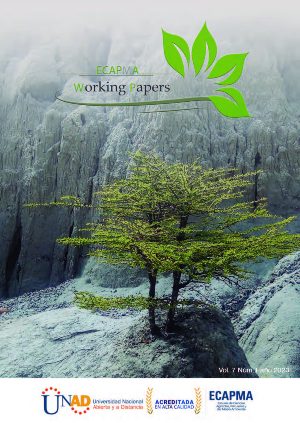Evaluación de productos Químicos y Biológico para Combatir la Antracnosis en Guanábana (Annona muricata L.) provocada por Colletotrichum spp.
In several municipalities in Colombia, the cultivation of soursop is of great importance. The pulp of this fruit is highly valued in large-scale production due to its considerable volume and distinctive
flavor. However, its production faces various phytosanitary challenges that have an economic impact, one of the main ones being anthracnose caused by the fungus Colletotrichum gloeosporioides, which affects both the fruit and floral and foliar tissue. Therefore, the present study is focused on evaluating biological and chemical products for the control of anthracnose in soursop (Annona muricata L.), caused by the fungus (Colletotrichum spp.). To do this, a study was carried out in the municipality of La Plata, Huila, in the Cabuyal village on the Madrigal farm. In the study, the effect of two chemically synthesized fungicides, commercially known as Antrasin and Skuper, and a biological fungicide called Rhapsody were examined, and a control group without fungicide application was included. The development of this research was carried out using a technified crop with emphasis on good agricultural practices, which
include a fertilization plan, integrated weed control, and integrated pest and disease management. The study was carried out in experimental units, applying foliar treatments to 132 trees distributed in four plots. Variables such as the proportions of disease impact, both in severity and prevalence, were analyzed, i.e., the effectiveness of each intervention in controlling anthracnose was examined. For each intervention, a completely randomized block experimental design (BCA) with eight iterations was used. The data obtained wre tabulated and complete descriptive statistics were applied for analysis.
The most relevant results indicated that the biological product Rhapsody stands out as the most efficient in controlling the presence of the disease in the plantations, achieving an efficacy level of 58.7%. This demonstrates an effective management capacity over the pathogenic fungus.






